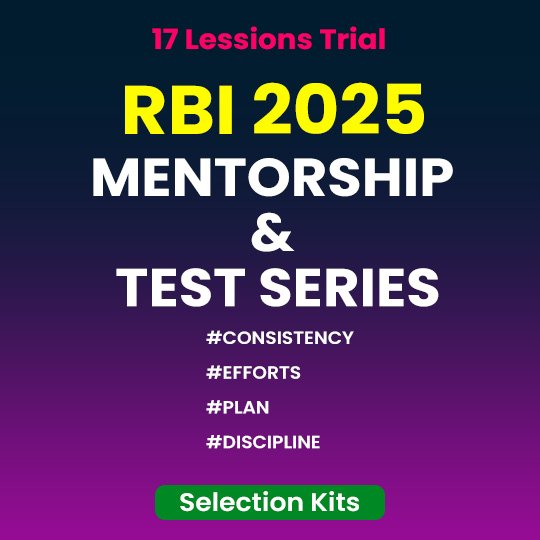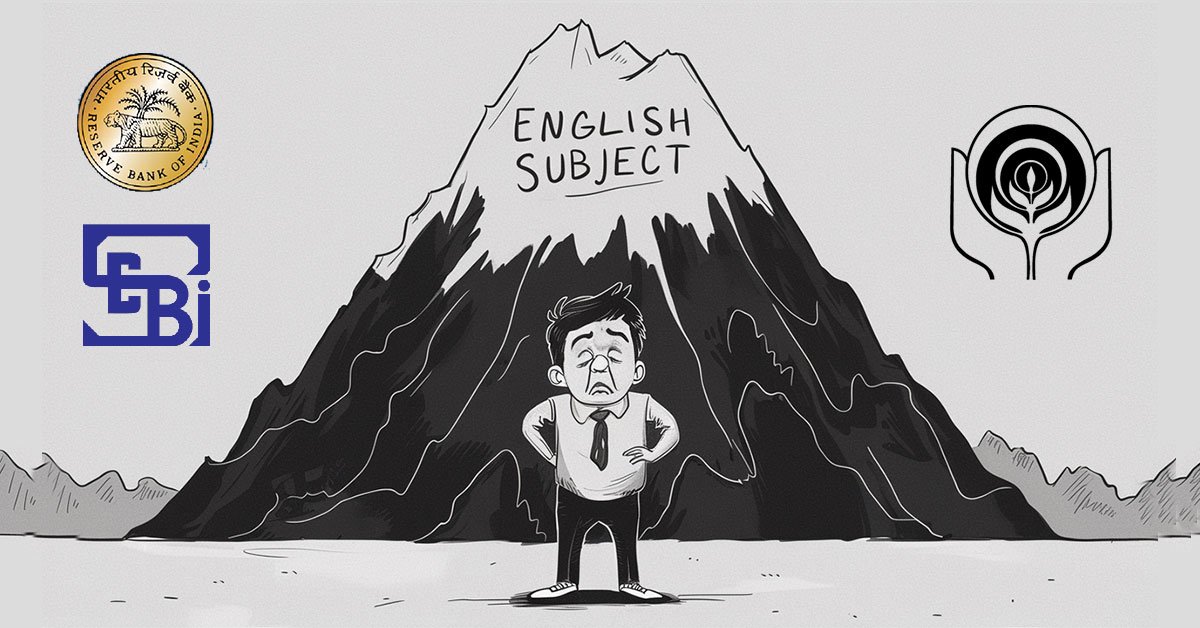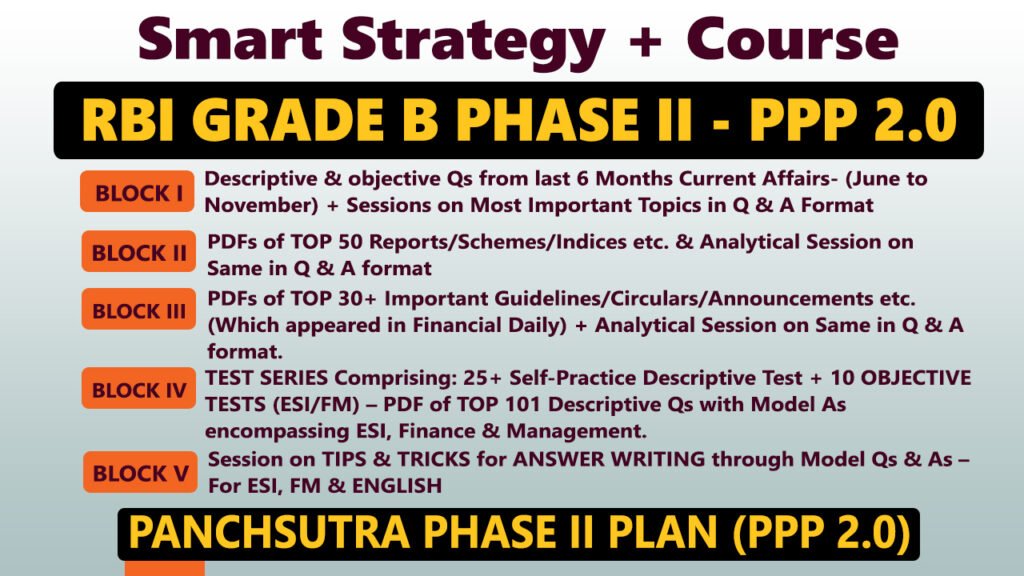Daily Current Affairs Quiz
5 April, 2025
International Affairs
1. China Imposes 34% Tariff on U.S. Imports in Retaliation
Context:
China announced that it will impose a 34% tariff on imports of all U.S. products beginning April 10, part of a flurry of retaliatory measures following U.S. President Donald Trump’s “Liberation Day” slate of double-digit tariffs.
Key Highlights
- Effective Date: April 10, 2025
- Tariff Rate: 34% on all U.S. products
- Reason: Response to President Donald Trump’s “Liberation Day” tariffs on Chinese goods
Export Controls on Rare Earth Elements
- New Restrictions: China to tighten export controls on critical minerals used in advanced technologies
- Elements Targeted:
- Samarium: Used in aerospace and defense
- Gadolinium: Key material for MRI scans and medical imaging
- Impact: Could disrupt global supply chains for tech, defense, and healthcare industries
China’s Additional Trade Actions
- Suspension of U.S. Chicken Imports:
- Reason: Detection of furazolidone, a banned drug in China
- Targeted Companies: Four U.S. poultry exporters (unnamed in this report)
- Sorghum Import Ban:
- Affected Company: C&D Inc.
- Reason: High levels of mold detected
- Additional Food Safety Concerns:
- Salmonella found in poultry shipments
New Trade Sanctions on U.S.-Linked Companies
- Total Firms Sanctioned: 27 new additions to China’s trade sanction/export control lists
- Export Ban on “Dual-Use” Goods: 16 of the 27 firms targeted
- Dual-use goods: Items that have both civilian and military applications
- Notable Companies Affected:
- High Point Aerotechnologies: A defense tech firm specializing in aerospace systems
- Universal Logistics Holdings: A publicly traded U.S. logistics and transportation company
- Impact: Could disrupt U.S. supply chains involving military tech and logistics sectors
China Files WTO Lawsuit Against U.S. Tariffs
- Target: U.S. “reciprocal” tariffs of 34% on Chinese goods
- Beijing’s Argument:
- Violates World Trade Organization (WTO) rules
- Harms rights and interests of WTO members
- Undermines rules-based multilateral trading system
Broader Implications
- Escalation Path: Trade war is moving beyond tariffs to sanctions, legal battles, and strategic resources
- Sectors at Risk:
- Defense & aerospace
- Logistics & transportation
- High-tech industries reliant on rare earth materials
2. India-EU Trade Dialogue
Context:
The US has imposed reciprocal tariffs of 26% on India and 20% on the European Union (EU), triggering retaliatory measures and a shift in trade alignments:
- China has imposed a 34% retaliatory tariff on US goods
- EU is preparing countermeasures against the US decision
This has created geopolitical trade instability, pushing key economies to accelerate bilateral partnerships and diversify market access.
India-EU Trade Strategy
Amid rising uncertainty, India and the EU are intensifying bilateral Free Trade Agreement (FTA) discussions:
- Commerce Minister Piyush Goyal and EU Trade Commissioner Maroš Šefčovič are expected to hold high-level talks in the coming days
- The 11th round of FTA negotiations is scheduled for the week of May 5 in Delhi
- The 10th round concluded in Brussels in March
Both sides aim to finalize the FTA by the end of 2025, aligning with the broader strategy of reducing dependence on unpredictable multilateral trade environments.
India-EU Economic Relationship
- EU is India’s second-largest trading partner in goods
- In FY24, exports to the EU reached $75.9 billion, accounting for 17.4% of India’s total exports
- Imports from the EU stood at $61.5 billion, contributing 9% of total imports
The current trade imbalance is favorable to India, strengthening its hand in negotiations.
Challenges
- The India-EU Broad-based Trade and Investment Agreement (BTIA) has been under negotiation since 2007
- Talks stalled in 2013 after 15 inconclusive rounds
- Key sticking points include tariff reductions, regulatory standards, and investment protections
- Though relaunched in 2022, fundamental differences persist, requiring political-level clearance
An assessment post the September 2023 round still awaits resolution, indicating sensitive unresolved issues likely tied to data localization, agriculture, and intellectual property rights.
Overlap with US Trade Talks
India is also in FTA talks with the US, targeting fall 2025 for the first phase of an agreement. Thus, simultaneous negotiations with both the EU and US could:
- Allow India to leverage concessions across talks
- Increase its geoeconomic relevance in a fragmented global trade environment
High-Stakes Diplomatic Play
India’s position as a resilient, fast-growing economy is attracting renewed attention from trade partners amid global volatility. However, the success of the India-EU FTA will depend on:
- Political will to overcome past deadlocks
- India’s ability to balance regulatory autonomy with market openness
- Strategic clarity on overlapping bilateral commitments
National Affairs
1. Railway Expansion and Border Village Development
Context:
Union Cabinet Approves ₹25,497 Crore for Railway Expansion and Border Village Development
Railway Projects: ₹18,658 Crore Investment
Approved by the Cabinet Committee on Economic Affairs, these projects aim to strengthen railway infrastructure across Maharashtra, Odisha, and Chhattisgarh, adding 1,247 km to the network.
Key Highlights:
- Coverage: 15 districts, 3,350 villages, and 4.7 million people.
- New Rail Lines:
- Sambalpur–Jarapda (3rd and 4th lines)
- Jharsuguda–Sason (3rd and 4th lines)
- Kharsia–Naya Raipur–Parmalaksa (5th and 6th lines)
- Gondia–Balharshah (doubling of lines)
- Significance:
- Improved mobility and service reliability
- Reduced congestion on some of Indian Railways’ busiest corridors
- Direct railway link to Baloda Bazar, Chhattisgarh—a major cement production hub
Vibrant Villages Programme-II: ₹6,839 Crore Allocation
Approved under the chairmanship of Prime Minister Narendra Modi, this fully government-funded initiative aims at border development and internal security enhancement.
Programme Objective:
- Improve living standards and livelihood in border villages
- Strengthen national integration and assist in border surveillance
- Curb trans-border crime and security threats
Focus States & Union Territories:
- Strategic Border Areas in:
- Northern & Northeastern States: Arunachal Pradesh, Assam, Bihar, Jammu & Kashmir, Ladakh, Manipur, Meghalaya, Mizoram, Nagaland, Sikkim, Tripura, Uttarakhand
- Western States: Gujarat, Punjab, Rajasthan
- Eastern States: Uttar Pradesh, West Bengal
Implementation Period: FY 2025–26 to 2028–29
Monitoring Mechanism:
- A high-level committee chaired by the Cabinet Secretary will oversee execution and performance of the programme.
These dual announcements underline the government’s commitment to:
- Modernizing transport infrastructure for economic growth
- Enhancing border area development to ensure national security and inclusive growth in remote areas
2. Cabinet Approves Vibrant Villages Programme Phase-II
Context:
On April 4, 2025, the Union Cabinet approved Phase-II of the Vibrant Villages Programme (VVP-II) a fully centrally funded scheme aimed at the comprehensive development of strategic villages along India’s international land borders (ILBs).
Key Features of VVP-II
- Total Budget: ₹6,839 crore
- Funding Structure: 100% Central Government funding
- Implementation Period: 2025–26 to 2028–29
- Scope: Covers border villages outside the northern borders (already addressed in VVP-I)
Strategic Objectives
- Improve living conditions and livelihood opportunities in remote border areas
- Ensure secure and prosperous borders
- Integrate border populations into the national mainstream
- Enable border residents to serve as the “eyes and ears” of the border guarding forces
- Help reduce trans-border crime
States and UTs Covered
VVP-II targets key border-facing villages across the following 17 states and union territories:
- Northern & Northeastern India:
- Arunachal Pradesh, Assam, Bihar, Jammu & Kashmir, Ladakh, Manipur, Meghalaya, Mizoram, Nagaland, Sikkim, Tripura, Uttarakhand
- Western & Eastern India:
- Gujarat, Punjab, Rajasthan, Uttar Pradesh, West Bengal
National Significance
VVP-II forms a vital component of India’s internal security strategy and long-term development vision for strategic, often underserved, border communities.
3. Centre Scraps Star-Rating System for State Environment Authorities
Context:
The Union Ministry of Environment, Forest and Climate Change (MoEF&CC) has officially withdrawn the star-rating system introduced in January 2022 to evaluate State Environmental Impact Assessment Authorities (SEIAAs). This was disclosed to the National Green Tribunal (NGT) during ongoing legal proceedings.
Star-Rating System
- Introduced: January 17, 2022
- Objective: To incentivize state bodies for quick and efficient environmental clearances for industrial and infrastructure projects
- Basis: Proposed in line with a November 2021 meeting chaired by Cabinet Secretary Rajiv Gauba under the ‘Ease of Doing Business’ initiative
- Rating Scale: 0 to 7 stars, based on:
- Number of days taken to approve projects
- Adherence to EIA timelines
- Efficiency during pre-approval stages
Legal Challenge and NGT Order
- Petitioner: Meenava Thantai, a Tamil Nadu-based fishermen’s association
- Legal Counsel: Ritwick Dutta and Stanly Hebzon Singh
- Grounds: Alleged that the system was arbitrary and diluted project scrutiny under the 2006 EIA Notification
- NGT Bench: Justice Pushpa Sathyanarayana and expert member Satyagopal Korlapati
- Outcome:
- MoEF&CC declared the 2022 memorandum inoperative
- NGT deemed the case infructuous due to the ministry’s withdrawal
Significance of the Decision
- The withdrawal marks a policy reversal, acknowledging concerns that the rating system prioritized speed over environmental safeguards
- Ensures better scrutiny of Category-B projects appraised at the state level under the EIA 2006 framework
- Reflects growing judicial and civil society oversight on environmentally sensitive policies
State Environmental Impact Assessment Authorities (SEIAAs)
State Environmental Impact Assessment Authorities (SEIAAs) are regulatory bodies formed by the Ministry of Environment, Forest and Climate Change (MoEFCC) to implement the Environmental Impact Assessment (EIA) Notification at the state level, granting environmental clearances for projects under Category B.
- Purpose
- SEIAAs are established to assess the potential environmental impacts of projects and grant environmental clearances for projects falling under Category B, which are smaller units in terms of production with or without specified minimum threshold of production but below that specified for Category A.
Future Outlook
- The ministry may develop a new evaluation framework later, with revised criteria
- It remains to be seen how the government balances economic growth with ecological responsibility
4. 6th BIMSTEC Summit
Context:
Prime Minister Narendra Modi said on Friday that BIMSTEC is a model for inclusive development and collective security, while unveiling a 21-point action plan to expand the grouping’s scope during its 6th annual summit in Bangkok.
Event: 6th BIMSTEC Summit
Location: Bangkok, Thailand
Date: April 2025
Key Initiatives in the 21-Point Action Plan
- Digital Payments Integration
- Proposal to link India’s Unified Payments Interface (UPI) with the payment systems of BIMSTEC nations to boost trade, tourism, and industry.
- BIMSTEC Chamber of Commerce
- Proposal to establish a regional Chamber of Commerce to enhance economic cooperation and private sector engagement.
- Security and Cooperation
- Hosting of the first Home Ministers’ Mechanism meeting in India to deepen regional security cooperation.
- Space Collaboration
- Setup of ground stations for space training.
- Nano satellite manufacturing & launch assistance.
- Remote sensing data use for regional development and planning.
- Energy Sector Development
- Highlighted the BIMSTEC Energy Centre in Bengaluru to train youth.
- Pushed for expedited work on electric grid interconnection across the region.
- Healthcare Support
- India offers to launch a regional capacity-building programme for cancer care.
Bilateral Talks: PM Modi Meets Bangladesh’s Muhammad Yunus
India’s Concerns Raised
- Safety of Minorities: PM Modi emphasized concerns over minority safety, especially Hindus, in Bangladesh.
- Discouraging Harmful Rhetoric: Stressed that divisive rhetoric should be avoided to maintain regional harmony.
- Border Security: Emphasized the need to prevent illegal crossings and strict law enforcement to secure borders.
Bangladesh’s Points
- Extradition of Sheikh Hasina: Yunus raised the matter of the former PM’s return.
- Border Killings: Concerns flagged over cross-border casualties and security handling.
Modi’s Assurance
- Reaffirmed India’s commitment to a democratic, stable, peaceful, and inclusive Bangladesh.
Science & Tech
1. A 15-Million-Year-Old Fish Fossil Reveals Australia’s Rainforest Past
Context:
Dr. Matthew McCurry, a palaeontologist, distinguishes his work from archaeology by focusing on ancient life forms animals and plants primarily through fossil records, whereas archaeology studies human history. His research centers on reconstructing past ecosystems to understand environmental changes.
Latest Discovery: Ferruaspis brocksi
- What Was Found: A new species of freshwater fish fossil named Ferruaspis brocksi, dating to the Miocene era (~15 million years ago), discovered at McGraths Flat, New South Wales.
- Scientific Significance: First fossil of its group found in Australia; it belongs to the Osmeriformes family, which includes modern smelts and graylings.
- Ecosystem Insight: The find reveals a once-wet, densely forested rainforest habitat, sharply contrasting with today’s arid land dominated by eucalyptus trees.
Unprecedented Preservation Details
- Soft Tissues Visible: Skeleton, skin, and stomach contents were preserved—an extremely rare occurrence in fossil science.
- Dietary Evidence: The fish had consumed phantom midge larvae and a small mussel.
- Coloration Clues: Melanosomes (color-producing organelles) suggest a darker top, pale belly, and two lateral stripes.
- Parasite Evidence: A freshwater mussel larva (glochidium) was attached, showcasing ecological relationships.
Why It Matters for Climate Understanding
- The Miocene era marks a climate transition Australia was once humid and lush, but by the end of the period, it had become increasingly arid.
- These fossils provide data beyond pollen records, offering a fuller picture of extinct species and ecosystems.
- Drivers of this environmental shift included tectonic drift (Australia moving north), altered ocean currents, and Antarctic glaciation.
Previous Significant Discovery: The Giant Trapdoor Spider
- Found in the same site (McGraths Flat), preserved in goethite (iron-rich rock).
- Belonged to the Barychelidae family, with modern relatives in wetter regions like Singapore and Papua New Guinea.
- Extinction likely linked to increasing aridity; these spiders were five times larger than current mainland species.
McGraths Flat is offering extraordinary insights into Australia’s ecological transformation from rainforest to desert. These fossil discoveries provide vital information for understanding historical biodiversity, climate change patterns, and potential future shifts.
Banking/Finance
1. India Fintech Foundation (IFF)
Context:
India Fintech Foundation (IFF), a proposed self-regulatory organisation (SROFT), was announced at Startup Mahakumbh in Delhi. Its core mission is to enable responsible innovation and establish ethical and operational standards for fintechs operating in India.
Strategic Relevance
India’s fintech landscape is expanding at breakneck speed. IFF’s introduction is a timely step toward creating a structured, industry-backed compliance and innovation framework. With the RBI already recognising FACE as an SROFT, IFF enters a critical regulatory conversation.
- Sector Growth: Rapid scaling creates systemic risks without oversight
- Regulatory Gap: IFF aims to bridge the gap between innovators and regulators
- Timing: RBI recognition of FACE makes the SROFT space competitive
- Market Demand: Rising urgency for responsible innovation, consumer trust, and data governance
Mission and Role of SROFT-DF
- Promote responsible innovation in fintech
- Set industry-wide ethical and operational standards
- Function as a link between regulators and fintech players
“If innovation is not responsible, it can result in accidents,” said Viswanathan, emphasizing the need for structured self-regulation.
Government and Industry Support
- Amitabh Kant (India’s G20 Sherpa) endorsed the role of SROs in ensuring sustainable fintech growth
- Current Membership: 100 fintech companies
- Positioned as a key element in India’s Viksit Bharat@2047 vision
Regulatory Landscape
- RBI has already recognised Fintech Association for Consumer Empowerment (FACE) as an SRO-FT
- Digital Lenders Association of India (DLAI) is rebranding as the Unified Fintech Forum
- SROFT-DF adds to the ecosystem as a new entrant focused on ethical innovation and compliance
Fintech Sector Outlook
- India hosts 10,244 fintech entities
- Funding has declined for 3 consecutive years:
- 2024: $1.9 billion (228 rounds)
- 2023: $2.8 billion (324 rounds)
- Peak in 2021: $8.3 billion (665 rounds)
- Source: Tracxn
Policy & Industry Implications
- Self-Regulation as a Strategic Lever
- Quote from Amitabh Kant, G20 Sherpa: “The pivotal mechanism to foster ethical growth in fintechs is the establishment of self-regulatory organisations.”
- IFF’s Role:
- Setting industry-wide norms for responsible innovation
- Driving fintech alignment on KYC, risk management, and data ethics
- Creating a channel for ongoing dialogue with regulators
- Potential Overlap with FACE:
- IFF’s legal standing is yet to be confirmed. This raises important questions around whether it will collaborate, compete, or coexist with FACE, the RBI-recognised SROFT.
Forward-Looking Assessment
- Regulatory Recognition:
- IFF’s success hinges on formal endorsement from the RBI
- Standardisation Impact:
- It could define best practices for governance, compliance, and operational resilience across fintechs
- SME Engagement:
- IFF’s 100-member base gives it scale, but it must now establish enforcement credibility
- Institutional Coordination:
- Collaboration with key government agencies will be essential to gain influence and deliver on its mandate
India Fintech Foundation represents a pivotal institutional development for the fintech ecosystem. If officially recognised, it can serve as a regulatory compass, balancing compliance with innovation. Its future depends on navigating existing SRO dynamics and building institutional authority through strategic policy engagement.
2. Banks Park Record ₹4.13 Trillion with RBI under Standing Deposit Facility (SDF)
Key Highlights
- Liquidity Surplus: Banking system liquidity moved into surplus in early FY26, prompting banks to park ₹4.13 trillion with the RBI on Thursday—the highest since the SDF’s introduction in April 2022.
- Standing Deposit Facility (SDF):
- The Standing Deposit Facility (SDF) is a monetary policy tool introduced by the Reserve Bank of India (RBI) to absorb excess liquidity from the banking system, allowing banks to deposit surplus funds with the RBI without collateral.
- Allows collateral-free overnight deposits with the RBI
- Offers an interest rate 25 bps below the repo rate (currently at 6.25%)
- Interest earned on SDF stands at 6.00%, still more attractive than market rates like WACR and TREPS
Why Banks Are Using SDF More
- Lower Overnight Rates: Call and triparty repo rates (TREPS) have dipped below 6%
- Government Spending: Surge in government cash balances has led to temporary liquidity accumulation
- Risk-Free Option: Banks prefer SDF over market lending to avoid counterparty risk
- Foreign Bank Activity: At quarter-end, foreign banks often park large rupee sums under SDF for currency management and compliance
Liquidity Management Tools Used by RBI
Data Snapshot
- Liquidity Adjustment Facility (LAF) Surplus: ₹2.16 trillion
- CD Issuances: Surged in recent weeks, further boosting short-term liquidity
India’s Forex Reserves Hit Near 5-Month High
Latest Reserve Position
- As of March 28, forex reserves rose to $665.4 billion
- This marks the fourth straight week of gains
- Weekly Increase: $6.6 billion
- 3-Week Prior Increase: $20.1 billion cumulative
Contributing Factors
- RBI Interventions in the forex market
- Valuation Changes from currency appreciation
- INR Performance: Rupee appreciated 0.6% WoW during the period
Key Takeaways
- The surge in SDF usage signals a temporary surplus and banks’ preference for safe, risk-free returns amid falling overnight rates.
- The rise in India’s forex reserves improves macro stability, potentially cushioning against external shocks.
- Experts warn that current liquidity surplus may be short-lived, and market inefficiencies continue to exist despite RBI’s tools.
3. RBI Releases Revised FEMA Draft Regulations
Context:
The Reserve Bank came out with revised draft regulations that cover export and import transactions under FEMA with an aim to promote ease of doing business. As per the revised draft, if the export proceeds of an exporter remain unrealised for a period beyond two years from the due date and the cumulative unrealised export proceeds of that exporter exceeds Rs 25 crore, he shall undertake further exports only against receipt of full advance or an irrevocable letter of credit.
Key Proposals in the Revised FEMA Draft
Export Proceeds Monitoring
If export proceeds remain unrealised for over two years from the due date, and the cumulative unrealised amount exceeds ₹25 crore, then the exporter must conduct future exports only against:
- 100% advance payment, or
- An irrevocable Letter of Credit (LC)
Import of Precious Metals (Gold and Silver)
- Advance remittances for importing gold or silver are not permitted
- Applies to authorised dealers facilitating such transactions
Purpose of the Revised FEMA Draft
- Enhance regulatory clarity for cross-border trade transactions
- Ensure timely realisation of export earnings
- Prevent misuse of import-export mechanisms in precious metals trade
- Align policy with global best practices to promote ease of doing business
Impact on Businesses
- Exporters with large outstanding dues must reassess risk management strategies
- Gold and silver importers must now rely on post-shipment payments, impacting procurement models
- Authorised dealers will need to update internal compliance protocols
4. PMS Players Entering Mutual Fund Space to Launch SIFs
Context:
Several top PMS and AIF players are seeking mutual fund licences to enter the Specialised Investment Funds (SIFs) segment. SIFs are newly introduced MF structures that combine the flexibility of PMS and AIFs with the tax and ticket-size advantages of mutual funds.
Recent MF Licence Applicants (Last 3 Months)
- Nuvama Wealth Management
- Marcellus Investment Managers
- Wealth First Portfolio Managers
- ASK Investment Managers (has received in-principle approval from SEBI)
Motivation for Entry into SIFs
- SIFs are designed to attract high-net-worth investors looking for flexible investment strategies with tax benefits
- They offer a minimum investment size of ₹10 lakh, compared to ₹50 lakh for PMS and ₹1 crore for AIFs
- Taxation only occurs at redemption, similar to mutual funds — unlike PMS (taxed at every trade) or Category III AIFs (taxed at fund level)
Key Strategies Allowed Under SIF Framework
- Equity-Oriented Strategies
- Equity long-short funds: Minimum 80% in equities, with a 25% short limit
- Ex-top 100 long-short funds: Exclude large-caps, maintain 65% equity exposure
- Sector rotation funds: Focus on max four sectors at a time
- Debt-Oriented Hybrid Strategies
- Blend of fixed income and other hybrid approaches, offering diversified returns with managed risk
Current Applicants for MF Licences
Applicants with Partial SEBI Approvals
- Jio BlackRock
- Pantomath Capital Advisors
- Capitalmind Financial Services
- ASK Investment Managers
5. Securis Finance Secures RBI NBFC Licence to Enter Education Lending Space
Context:
Securis Finance, a subsidiary of fintech firm FirstPay Technologies, has received regulatory approval from the Reserve Bank of India (RBI) to operate as a non-banking financial company (NBFC). The company plans to address the under-served credit needs in India’s education sector through flexible and accessible loan products.
Key Highlights
- NBFC Approval: Granted by RBI, enabling formal entry into India’s financial lending ecosystem
- Core Focus: Student-centric lending with education loans tailored for school fees, tuition, test prep, and upskilling courses
- Loan Range: Between ₹50,000 and ₹5 lakh
- Pilot Launch Locations: Bengaluru, Mumbai, Delhi-NCR, Hyderabad, and Pune
- Loan Disbursement Goal: ₹100 crore in education loans during FY25
- Vision 2030: Expand loan book to ₹1,000 crore, targeting 100,000+ students annually
Tech Integration
Securis will operate a digital-first platform allowing users to:
- Apply and track education loans online
- Receive offers based on academic merit and financial need
- Access low-friction, embedded finance options through education partners
By targeting the financially underserved student segment, Securis aims to disrupt the traditional student loan model and enhance accessibility to quality education across urban and semi-urban regions.
6. India Post Partners with Nippon India Mutual Fund for Door-to-Door KYC Services
Context:
In a landmark collaboration, the Department of Posts (DoP) has signed a Memorandum of Understanding (MoU) with Nippon India Mutual Fund to deliver door-to-door KYC verification services. The initiative is designed to simplify mutual fund onboarding and boost financial inclusion across India.
Key Highlights
- MoU Signed By:
- Ms. Manisha Bansal Badal, GM, Business Development Directorate, DoP
- Mr. Sundeep Sikka, Executive Director & CEO, Nippon Life India Asset Management
- Objective: Streamline KYC verification for mutual fund investors through doorstep service
- India Post’s Reach: Extensive network across urban, rural, and remote locations makes it ideal for large-scale KYC operations
Previous Success
- Over 5 lakh KYC verifications already completed for UTI and SUUTI
- Demonstrated capability in handling secure, high-volume compliance operations
Benefits for Investors
- Convenience: KYC can be completed from home, ideal for the elderly and less-mobile individuals
- Inclusivity: Targets rural and underserved communities, aligning with the Jan Nivesh initiative
- Accessibility: Empowers first-time investors to participate in mutual funds with ease and security
Strategic Significance
- Boosts mutual fund penetration in underbanked regions
- Reinforces India Post’s role as a key enabler of financial empowerment and inclusion
- Opens doors for similar partnerships, expanding India Post’s footprint in the financial services ecosystem
7. Fintech Startups Glow Up Amid Retail Gold Rush
Context:
As market volatility drives retail investors toward safer investments, a wave of fintech startups focused on fixed deposits and digital gold are catching the eye of venture capital (VC) firms. Startups like Gullak and Stable Money are emerging as frontrunners in the broader wealthtech sector, attracting significant funding despite regulatory uncertainties.
Key Developments
- Gullak, a digital gold savings platform, is in advanced talks to raise $5–6 million, likely led by Chiratae Ventures.
- Stable Money, backed by Lightspeed, is closing a $20–25 million round led by Fundamentum Partnership, which follows a $15 million round in July 2024.
- Post-funding, Stable Money’s valuation is expected to rise to around $130 million.
Market Potential
- India’s household asset base stands at $10.7 trillion, with over 15% held in gold.
- Fintech startups aim to digitize this traditional preference, offering easy and accessible gold investment tools.
Challenges Ahead
- Regulatory uncertainty looms, especially in digital gold. SEBI has barred registered platforms from selling it, raising fears of a potential crackdown.
- Concerns around custody chains and audit trails of physical gold backings remain unresolved.
- Market penetration is limited — only around 100,000 unique investors use these alternative platforms.
- Economic sustainability of low-margin products like FDs is questioned, particularly as larger fintechs expand into the same space.
- As Joseph Sebastian of Blume Ventures pointed out: “What is the moat?” Startups must differentiate themselves amid growing competition.
Despite the regulatory haze and thin margins, VC interest in wealthtech startups remains strong, thanks to India’s enduring affinity for gold and fixed-income assets. The sector’s success now hinges on regulatory clarity, innovation, and customer trust.
8. IndusInd’s Term & CASA Deposit Growth Slips in Q4
Context:
IndusInd Bank reported a slowdown in deposit growth and a decline in loan book expansion during Q4FY25. The financial performance was impacted by accounting discrepancies that triggered investor concerns and a steep drop in stock value.
Key Deposit Metrics – Q4 FY25
- CASA Growth: Slowed to 32.8% in March 2025 from 34.9% in December 2024.
- Retail & Small Business Deposits: Fell to ₹1.85 lakh crore in March 2025 from ₹1.88 lakh crore in December 2024.
- Total Deposits:
- Sequential growth: 0.4% (₹4.11 lakh crore as of March 31, 2025)
- YoY growth: 6.8%, down from 11% in the previous quarter.
- CD Mobilisation:
- Raised ₹16,550 crore in March 2025, 6.6x higher than ₹2,500 crore in March 2024.
Impact of Disclosures and Governance Measures
- March 10: Bank disclosed internal review of its derivatives portfolio, identifying accounting discrepancies.
- Estimated Impact: Net worth may be hit by ~2.35%, with analysts estimating a ₹1,600 crore potential loss.
- Stock Performance: Down over 50% YoY, with a sharp fall after disclosures; closed at ₹682/share on Friday.
- Governance Actions:
- RBI granted a 1-year extension for CEO Sumant Kathpalia till March 23, 2026.
- On March 21, an independent audit firm was appointed to investigate the derivatives-related discrepancies and assign accountability.
Loan Book Performance
- Total Advances: Fell by 5.2% sequentially, down to ₹3.48 lakh crore as of March 31, 2025.
- Corporate Loan Book:
- Declined over 15% QoQ
- Down 5% YoY
- Consumer Loans:
- Up 6.3% YoY
- Up 3.4% QoQ
IndusInd Bank faces a challenging recovery path following the fallout from accounting issues. While it has moved swiftly with corrective steps, including enhanced CD mobilisation and external audits, the slowdown in deposits and advances signals short-term headwinds. Restoring investor trust and operational stability will be key going forward.
9. How Bad Loans Ruined India’s Banking System
Context and Genesis
- 2008 Global Financial Crisis Impact: India launched a stimulus programme, injecting liquidity to boost demand.
- Unintended Consequence: Stimulus met infrastructure gaps and low manufacturing capacity, resulting in inflation.
- Policy Shift: Government prioritized infrastructure investment, encouraging private sector participation via Public-Private Partnerships (PPPs).
Bad Loans
Bad loans, also known as non-performing loans (NPLs), are loans where the borrower fails to make payments (interest or principal) for an extended period, typically 90 days or more, and are considered risky for lenders because they are unlikely to be repaid in full.
- Definition
- A bad loan, or non-performing loan (NPL), is a loan where the borrower is in default and has not paid the agreed-upon principal and interest repayments for a specified period.
- Causes
- Non-performing loans can occur when borrowers experience financial difficulties, job loss, or other situations that make it challenging to continue making repayments.
The Book’s Focus
- The Dirty Dozen: India’s Twelve Biggest Corporate Defaulters by N. Sundaresha Subramanian investigates the fallout of India’s post-crisis policy.
- Core Focus: 12 largest unpaid loans that created a mountain of non-performing assets (NPAs).
- Notable Defaulters: Ruias (Essar Steel), Gaurs (Jaypee Infratech), Mittals (ABG Shipyard), among others.
- Trigger: Gained renewed attention after a borrower failed to block its release in Kolkata’s Alipore court.
The PPP Model and Systemic Failures
- Inappropriate Partner Selection: Contracts awarded to inexperienced firms—e.g., a TV broadcaster bagging large infrastructure projects.
- Flawed SPV Structure:
- Private players bore minimal risk but shared profits.
- Projects executed through Special Purpose Vehicles with non-recourse clauses, leading to poor credit discipline.
- Misuse of Loans:
- Widespread gold-plating of project costs.
- Funds diverted to unrelated entities or political funding.
- Financial Ecosystem Weaknesses:
- Banks lacked project finance skills.
- Absence of a corporate bond market meant short-term deposits funded long-term projects, causing maturity mismatch.
Structural Problems and Political Fallout
- NPAs became a major election issue in 2014, symbolizing corruption and mismanagement.
- Banking Crisis Origins: Not just bad intent, but systemic design flaws allowed bad loans to mushroom.
- Book captures the political economy of credit misuse, but misses deeper historical context.
Critique of the Book
- Strengths:
- Strong investigative reporting.
- Factual account of India’s biggest defaulters.
- Weaknesses:
- Lacks historical continuity—no analysis of India’s repeated failures since the 1980s (e.g., BIFR era, RBI frameworks).
- Misses discussion on regulatory pushbacks, such as those highlighted in Urjit Patel’s Overdraft.
- Feels journalistic rather than analytical.
Broader Implications
- Despite multiple reforms, India’s credit ecosystem remains vulnerable to misuse.
- Recent trends: Accelerated write-offs, regulatory dilution, and continued political-business collusion.
- Notable Cases:
- Nirav Modi’s fraudulent borrowings.
- Vijay Mallya’s escape despite red flags.
- he book underscores India’s credit accountability crisis, where penal consequences are rare.
Economy
1. MSME Sector Braces for Tariff Shocks
Context:
India’s micro, small, and medium enterprises (MSMEs) remain highly exposed to trade policy disruptions, particularly the U.S. tariff hikes. Sectors such as textiles, auto parts, and gems & jewellery, where MSMEs have a significant footprint, are particularly sensitive due to:
- Low financial buffers
- Limited capacity for rapid strategy realignment
- High dependence on export-linked revenues
Lenders Push for Risk Mitigation through Credit Guarantee Reform
Banks are actively considering modifications to credit guarantee terms to cushion MSMEs from tariff-driven credit risks. The proposal involves:
- Enhancing credit coverage under government-backed schemes
- Streamlining access to working capital
- Potential collaboration with the Union Government and industry bodies to structure targeted relief
The aim is to reduce lender hesitation in funding vulnerable enterprises during a time of external trade pressure.
Relative Advantage Amid Global Shifts
- Despite exposure to tariffs, some Indian SMEs may gain competitive advantage over Chinese firms, which are subject to higher reciprocal tariffs.
- To leverage this, bankers argue that incentives and proactive government policy are essential.
Lending Trends and Sector Exposure
According to RBI data (February 2025):
- Credit to micro and small units rose 9.7% YoY to ₹7.84 trillion
- Credit to medium-sized firms grew 18.1% YoY to ₹3.52 trillion
These figures suggest healthy credit demand, but underlying risks may increase if trade barriers remain or intensify.
Sectoral Safeguards and Policy Fluidity
The pharmaceuticals sector, a major export contributor, has been kept outside the tariff regime. However, policy inconsistency from the U.S. adds uncertainty across other key sectors. Textiles, with high export value and employment potential, is flagged as a priority area for risk monitoring and stakeholder consultation.
Government-Lender Coordination Underway
Public sector banks are engaging with government officials, MSME units, and trade bodies to:
- Assess the evolving impact
- Build tailored credit and policy responses
- Explore sector-specific support measures
These consultations will shape medium-term strategies as the situation remains fluid.
Trade Impact: Contained Direct Hit, Broader Collateral Risks
SBI’s internal research shows that exports to the U.S. account for just ~4% of India’s GDP, indicating a limited direct macroeconomic impact. However, broader risks loom:
- A global slowdown could dampen export orders across markets
- Financial market volatility may erode credit confidence and investor sentiment
- India’s exports to the U.S. have declined since FY23, now forming 17–18% of total exports
The top 15 items exported to the U.S. represent 63% of the value, amplifying the importance of focused policy for these sectors.
2. Global Tariffs May Trigger Deflationary Pressure in India: SBI & UBS
Context:
The recent wave of reciprocal tariffs imposed by the US on major economies with India facing lower relative tariffs could lead to:
- Increased dumping of goods into India from countries seeking alternative export markets
- Lower domestic inflation due to a possible oversupply of cheaper imported goods
SBI’s View
State Bank of India (SBI) suggests that:
- India could experience downward pressure on inflation
- Dumping by countries impacted more severely by US tariffs might flood Indian markets with low-cost goods
This may benefit consumers in the short term but could harm domestic manufacturers and require policy response.
UBS Outlook
According to UBS:
- There is scope for an additional 50 basis points (bps) rate cut in the current monetary cycle
- This would follow the 25 bps repo rate cut in February
- UBS also expects:
- Currency flexibility
- Continued liquidity support
- Potential regulatory easing to support economic stability
Rate Policy Timeline
- Between May 2022 and Feb 2023, RBI had raised rates by 250 bps
- The stance shifted from “withdrawal of accommodation” to “neutral” in October 2023
- Further rate cuts are now likely, in light of global economic slowdown risks
Emkay Global’s Warning
Emkay Global sees material downside risks to India’s 6.5% GDP growth forecast for FY26, citing:
- Higher chances of a US/global recession if tariffs persist
- Disinflationary effects from:
- Declining global commodity prices
- Supply gluts
- India may not remain insulated from a cyclical slowdown in Emerging Markets (EM) Asia, despite its current resilience
The report also highlights that RBI and other EM central banks will need to manage conflicting forces in financial markets, even as they adopt a more dovish stance.
BS
3. LIC Counters USTR’s Allegations on Sovereign Guarantee
Context:
The Office of the U.S. Trade Representative (USTR) has criticized India for maintaining an “uneven playing field” in its insurance sector, specifically targeting Life Insurance Corporation of India (LIC) for:
- Benefiting from an explicit sovereign guarantee on every policy
- Operating without the same prudential supervision and legal framework as private firms
- Gaining unfair competitive advantage due to perceived state backing, leading customers to prefer LIC policies over private alternatives
LIC’s Rebuttal
LIC, India’s largest state-owned life insurer, responded with a firm denial of any special treatment or competitive edge derived from sovereign backing. The key arguments made include:
- Sovereign Guarantee Not Invoked: The guarantee—granted during nationalisation in 1956—has never been triggered and is a statutory provision for public confidence, not a functional tool.
- Not a Marketing Tool: LIC emphasized that the guarantee has never been used to attract customers or promote products.
- Equal Regulatory Treatment: LIC is regulated by both the IRDAI (Insurance Regulatory and Development Authority of India) and SEBI, just like private insurers.
Competitive Landscape: Numbers Tell the Story
LIC underscored that its leadership is not due to privileges but due to structural strengths:
- Operates alongside 24 private life insurers in a fully competitive market
- Has 1.4 million agents, nearly matching the 1.61 million agents of all private firms combined
- Serves over 300 million customers, thanks to distribution depth and brand trust
Broader Implications
While LIC is making a credible case that it plays by the same rules as private players, the USTR’s concerns raise critical questions:
- Whether the legal presence of a sovereign guarantee, even if unused, can distort market perceptions and affect consumer behavior
- Whether regulatory parity is fully realized in practice, or if state ownership creates implicit market confidence beyond LIC’s control
- The growing spotlight on state-owned enterprises (SOEs) in global trade negotiations and their compliance with competition norms
Strategic Signal from LIC
In its closing remarks, LIC called for a “more balanced and factual appreciation” of its role in India’s financial ecosystem, emphasizing its contributions to financial inclusion, policyholder protection, and transparent governance.
4. MSMEs Face Pressure Amid Tariff Shocks
Context:
The imposition of reciprocal tariffs has sparked concerns for India’s micro, small, and medium enterprises (MSMEs), particularly those operating in export-reliant sectors such as textiles, auto components, and gems & jewellery. These sectors have limited financial resilience to absorb global shocks and reorient business strategies swiftly.
Lenders Explore Risk-Sharing Mechanisms
State-owned lenders, including SBI, are considering revisions in credit guarantee schemes to de-risk MSME lending during this volatile trade environment. Discussions may be held with the Union Government to improve:
- Coverage terms under the Credit Guarantee Fund Trust for Micro and Small Enterprises (CGTMSE)
- Flexibility in repayment structures
- Interest subvention for exporters in impacted sectors
This would provide comfort to lenders while enabling MSMEs to access working capital without increasing default risks.
Sectoral Exposure and Relative Advantage
While certain industries may face immediate headwinds, India’s SMEs could gain relative advantage over exporters from countries like China, which face higher tariff rates from the U.S. However, to capitalize on this, incentives and infrastructure support will be critical. Industries such as pharmaceuticals are currently exempt from reciprocal tariffs and remain strong contributors to India’s export mix.
Lending and Growth Data
As per RBI’s latest data (February 2025):
- Credit to micro and small units: ₹7.84 trillion (↑ 9.7% YoY)
- Credit to medium-sized firms: ₹3.52 trillion (↑ 18.1% YoY)
This indicates sustained financing demand, but the quality and risk appetite behind these loans may shift if policy uncertainty or export decline continues.
Export Exposure and Policy Fluidity
India’s exports to the U.S. form ~4% of GDP, implying limited direct macroeconomic impact. However, SBI Research notes collateral risks due to:
- Global growth slowdown
- Financial market volatility
- Policy unpredictability in the U.S. affecting long-term planning
A one percent reduction in reciprocal tariffs to 26% for India offers marginal short-term relief, but the broader policy direction from Washington remains uncertain.
Strategic Actions Ahead
Key stakeholders, including industry associations, banks, and the government, plan to formulate coordinated action plans after further data emerges in the coming fortnight. These could include:
- Revising export financing norms for MSMEs
- Sector-specific fiscal incentives
- Enhancing logistics and compliance support to improve cost competitiveness
Outlook and Considerations
With India’s exports to the U.S. already on a declining trend since FY23, and the top 15 export items accounting for 63% of total U.S.-bound trade, the near-term focus will be on:
- Diversifying export markets
- Improving productivity in exposed sectors
- Ensuring continuity and consistency in bilateral trade policy to retain investor and lender confidence
5. Impact of U.S. Tariffs on India’s FY26 Macroeconomic Outlook
GDP Growth: Moderation Triggered by External Shock
- The newly imposed U.S. tariffs are expected to dampen India’s FY26 GDP growth by 20–40 basis points.
- Revised Growth Trajectory:
- Union Budget Estimate: 6.8%
- BoB Revised Forecast: 6.6% (↓20 bps)
- Barclays Forecast: 6.5% (↓30 bps)
- Quantitative Implication:
- GDP expected to fall from a projected ₹200.7 lakh crore to between ₹200.1–₹200.3 lakh crore.
- The deceleration is externally induced and not due to weakening domestic fundamentals, indicating a vulnerability to trade policy shocks.
External Sector Pressure: Export Exposure Concentration
- Tariff-sensitive exports account for 9–11% of India’s shipments to the U.S., making the economy moderately exposed.
- High-Risk Segments:
- Electronics and machinery: capital-intensive, large backward linkages
- Precious stones and garments: SME-heavy, labor-intensive
- FY24 Baseline:
- U.S.-bound exports = ₹6.4 lakh crore
- Impact Projections:
- BoB: ₹64,000 crore decline (10% of total)
- Jan FY25 data: Exports already down 2.4% YoY, even before tariff effect
- Cumulative risk (FY25): Up to ₹57,000 crore loss in export value
Inflation Outlook: Currency as Transmission Channel
- BoB currency-inflation modeling:
- 10% INR depreciation → +0.12–0.16% in WPI short-term
- Longer-term pass-through effect → +0.38–0.49%
- This suggests imported inflation risk via raw materials and capital goods, especially in sectors affected by dollar-denominated contracts.
Policy Response Matrix
- Monetary Policy:
- Elara Securities anticipates a 50 bps rate cut by RBI in FY26
- This implies policy is expected to lean accommodative despite global rate volatility
- Fiscal Posture:
- No revisions announced, but government may need to deploy export credit support, incentives, or targeted SME relief
Corporate & Financial Sector Implications
- Revenue Compression Risk:
- Export-facing firms may reduce prices to maintain competitiveness, compressing margins
- Banking Sector Sensitivity:
- SMEs in gems & jewelry, apparel, and electronics could face cash flow stress
- BoB flags need for enhanced monitoring of these borrower segments
Strategic Outlook
- Mitigation Options:
- Ministry of Commerce is reviewing strategic responses, including bilateral negotiations
- Medium-term response could involve diversifying export markets and strengthening FTA frameworks
- Structural Insight:
- India’s exposure to external tariff shocks is relatively contained, but its dependence on a few high-value sectors for U.S. exports amplifies the short-term pain.
The economic fallout from U.S. tariffs, while manageable in absolute macro terms, reveals India’s export vulnerability to bilateral frictions. Sectoral stress, especially among SMEs and dollar-sensitive exporters, could have knock-on effects on employment and credit quality. The policy mix will need to carefully balance external stability, growth support, and inflation management going into FY26.
TH
Facts To Remember
1. Manoj Kumar, who made ‘Bharat’ a household name, takes his final bow
Manoj Kumar, whose films played a vital role in shaping the cultural consciousness of the country, passed away in Mumbai early on Friday after a prolonged illness. He was 87.
2. RBI to issue ₹10, ₹500 notes bearing Governor’s signature
The Reserve Bank of India (RBI) said it will issue ₹10 and ₹500 denomination banknotes in Mahatma Gandhi (New) Series bearing the signature of new RBI Governor Sanjay Malhotra.
3. Bihar to host Khelo India Youth Games in May 2025
The seventh edition of the Khelo India Youth Games will be staged in five cities of Bihar from May 4 to 15. Quite excited about Khelo India Games shaping into a strong foundation of Indian sports, the Union Sports Minister, Mansukh Mandaviya, said that there would be 14 different types of Khelo India Games through the season.
4. India ranks 10th with $1.4 bn pvt investment in AI: UN report
India and China are the only developing countries in the world with significant private investments in AI in 2023, according toa UN report. The 2025 Technology and Innovation Report, issued by UN Trade and Development (UNCTAD), also states that India ranked 36th in 2024 on the ´Readiness for Frontier Technologies´ index, improving its position from 48th in 2022.
5. Hitesh Becomes First Indian to Reach Final
National champion Hitesh displayed fine tactical acumen to get the better of France’s Makan Traore 5-0 in the 70kg bout to become the first Indian to reach the final in the World Boxing Cup Brazil 2025.
6. Delhi Joins Ayushman Bharat, Doubles Health Cover to ₹10 Lakh per Family
The National Health Authority and the Delhi Government signed a Memorandum of Understanding (MoU) to implement the Ayushman Bharat Pradhan Mantri Jan Arogya Yojana in the National Capital.



















